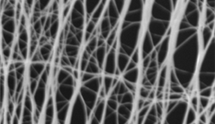Nearly Transparent Conductive Films
on

A team at Rice University (USA) has devised a method for making nearly transparent films of conductive carbon nanotubes, a goal sought by researchers around the world. They found that dipping slides into a solution of pure nanotubes in chlorosulphonic acid (CSA) left them with an even coating that, after further processing, had none of the disadvantages seen with other methods. According to the researchers, the method is scalable to high-throughput industrial processes such as slot, slide and roll coating. The films, which could potentially be used for touchscreens, remained electrically stable after more than three months, according to the team.
A frustrating characteristic of nanotubes, particularly long ones, is that they attract each other in common solvents, making it a difficult to disperse them. Functionalising nanotubes – dressing them with chemicals – can make them less attractive to each other, but it degrades their electrical properties. Combinations of a surfactant and sonication have also been tried, but the nanotubes break during sonication and the surfactant leaves a residue that cannot be rinsed away.
The team produced films by mixing single- or double-walled carbon nanotubes with CSA in various concentrations. They dipped glass slides into the nanotube solutions with a motorised arm to ensure even coating as the slides were steadily withdrawn. They used chloroform to coagulate the acid and dry the slides, followed by a wash of diethyl ether. The result was a film several nanometres thick that provided the best tradeoff between transparency and sheet resistance.


Discussion (0 comments)